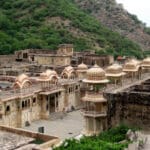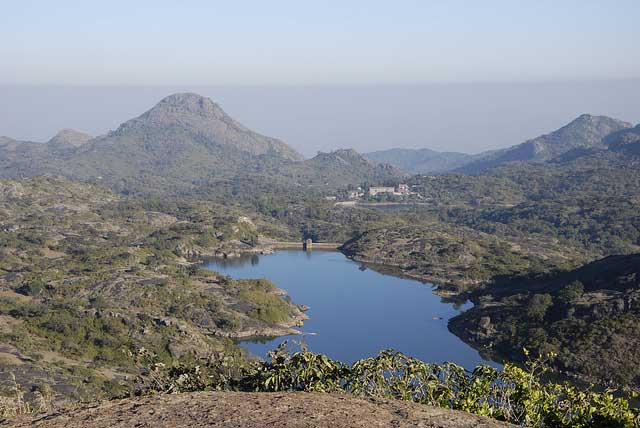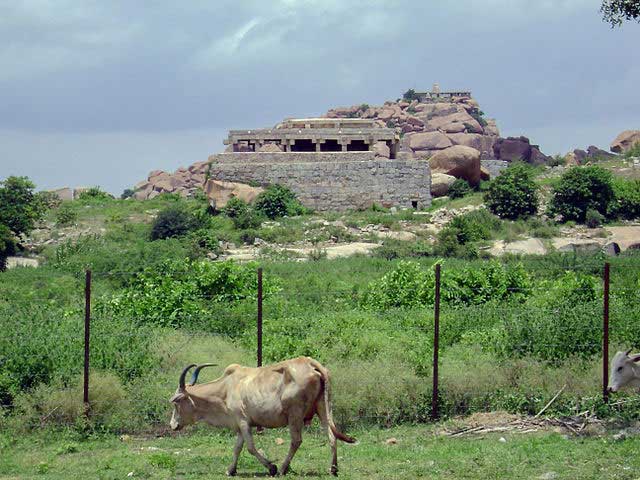India is celebrated for its incredible biodiversity, which encompasses a wide range of ecosystems, habitats, and species. From the snow-capped Himalayas to the dense forests of the Western Ghats, India’s landscapes are home to an astonishing variety of flora and fauna. The country’s diverse geography and climate have contributed to the evolution of numerous endemic species, making it a global biodiversity hotspot.
Importance of Wildlife Conservation
Wildlife conservation is crucial for maintaining the ecological balance and preserving the delicate interdependence of species within ecosystems. In addition to its intrinsic value, wildlife plays a vital role in various ecological processes such as pollination, seed dispersal, and nutrient cycling. Furthermore, wildlife-based tourism contributes significantly to India’s economy, highlighting the importance of conserving natural habitats and iconic species.
Legal Framework for Wildlife Conservation
The Wildlife Protection Act of 1972 serves as the primary legal instrument for wildlife conservation in India. This legislation provides for the protection, conservation, and management of wildlife and their habitats across the country. Additionally, various international conventions and agreements, such as the Convention on Biological Diversity and the Convention on International Trade in Endangered Species of Wild Fauna and Flora (CITES), further reinforce India’s commitment to wildlife conservation.
Major Wildlife Conservation Initiatives in India
Project Tiger: Preserving the Iconic Bengal Tiger
Project Tiger, launched in 1973, aims to conserve the endangered Bengal Tiger and its habitat. Under this initiative, designated tiger reserves are established across India, providing protected areas where tigers can thrive. The project focuses on habitat management, anti-poaching efforts, scientific monitoring, and community participation to ensure the long-term survival of this majestic species.
Project Elephant: Safeguarding India’s Elephants
Project Elephant was launched in 1992 with the objective of protecting and conserving wild elephants and their habitats. The project emphasizes habitat management, population monitoring, human-elephant conflict mitigation, and community-based conservation initiatives. By addressing threats such as habitat loss, fragmentation, and poaching, Project Elephant seeks to secure the future of Indian elephants.
Project Snow Leopard: Protecting the Elusive Mountain Predator
Project Snow Leopard, initiated in 2009, focuses on the conservation of the endangered snow leopard and its high-altitude habitat. This collaborative effort involves government agencies, NGOs, local communities, and international partners working together to mitigate threats such as poaching, habitat degradation, and human-wildlife conflict. Through community-based conservation initiatives and scientific research, Project Snow Leopard aims to ensure the survival of this iconic mountain predator.
Conservation of Endangered Species in India
Bengal Tiger Conservation Efforts
Efforts to conserve the Bengal Tiger include habitat preservation, anti-poaching measures, scientific monitoring, and community engagement. Tiger reserves such as Ranthambore, Bandhavgarh, and Kaziranga play a crucial role in tiger conservation by providing protected areas where tigers can breed and thrive. Ecotourism initiatives within these reserves not only generate revenue but also raise awareness about tiger conservation among visitors.
Asiatic Lion Conservation Initiatives
The Asiatic lion, confined to the Gir Forest of Gujarat, faces threats such as habitat loss, human-wildlife conflict, and genetic isolation. Conservation efforts focus on habitat restoration, population monitoring, genetic management, and community involvement. The Gir National Park and Wildlife Sanctuary, a designated protected area for Asiatic lions, plays a pivotal role in their conservation through habitat management and anti-poaching measures.
Indian Rhinoceros Protection Measures
The Indian rhinoceros, predominantly found in the Kaziranga and Manas National Parks, is vulnerable to poaching and habitat loss due to encroachment and agricultural expansion. Conservation efforts include strict anti-poaching patrols, habitat restoration, community conservation programs, and translocation efforts to establish new rhino populations in suitable habitats. The success of these conservation measures is evident in the steady increase in the rhinoceros population in recent years.
Role of National Parks and Wildlife Sanctuaries
Kaziranga National Park: A Haven for Rhinoceros Conservation
Kaziranga National Park, located in the floodplains of the Brahmaputra River in Assam, is renowned for its population of Indian one-horned rhinoceros. Conservation efforts in Kaziranga focus on habitat management, anti-poaching patrols, community engagement, and scientific research. The park’s successful conservation model has led to a significant increase in the rhinoceros population, making it a symbol of conservation success in India.
Jim Corbett National Park: Preserving Bengal Tigers
Jim Corbett National Park, nestled in the foothills of the Himalayas in Uttarakhand, is India’s oldest national park and a flagship tiger reserve. Conservation efforts in Corbett include habitat preservation, anti-poaching measures, scientific monitoring, and community-based conservation initiatives. The park’s diverse landscapes, rich biodiversity, and charismatic megafauna attract thousands of visitors each year, contributing to the local economy while supporting tiger conservation efforts.
Bandipur National Park: Protecting India’s Wildlife Heritage
Bandipur National Park, situated in the Western Ghats of Karnataka, is a vital habitat for endangered species such as the Indian elephant, tiger, and leopard. Conservation initiatives in Bandipur focus on habitat restoration, anti-poaching patrols, wildlife monitoring, and ecotourism promotion. The park’s strategic location as part of the Nilgiri Biosphere Reserve makes it an essential landscape for conserving India’s wildlife heritage.
Challenges and Future Directions in Wildlife Conservation
Human-Wildlife Conflict Mitigation
Human-wildlife conflict poses a significant challenge to wildlife conservation efforts in India, particularly in areas where people and wildlife share habitats. Addressing this issue requires a multifaceted approach, including the establishment of wildlife corridors, adoption of innovative conflict mitigation techniques, promotion of sustainable livelihoods, and enhanced community participation in conservation efforts. By fostering coexistence between humans and wildlife, India can mitigate conflict and ensure the long-term survival of endangered species.
Climate Change and Habitat Degradation
Climate change poses a growing threat to wildlife and ecosystems in India, leading to habitat degradation, altered precipitation patterns, and increased frequency of extreme weather events. Conservation strategies must incorporate climate resilience measures, such as habitat restoration, sustainable land-use practices, and ecosystem-based adaptation strategies. Additionally, raising awareness about the impacts of climate change on wildlife and advocating for policy measures to mitigate greenhouse gas emissions are essential for safeguarding India’s biodiversity in the face of a changing climate.
Sustainable Development and Conservation
Balancing economic development with wildlife conservation is essential for India’s sustainable future. Integrated conservation and development approaches, such as ecotourism, community-based natural resource management, and sustainable agriculture, can help reconcile conservation goals with the needs of local communities. By promoting green growth and fostering partnerships between government agencies, NGOs, businesses, and local communities, India can achieve its development objectives while conserving its natural heritage for future generations.
Conclusion
In conclusion, wildlife conservation in India is a complex and multifaceted endeavor that requires collaboration, innovation, and long-term commitment from various stakeholders. Through initiatives such as Project Tiger, Project Elephant, and Project Snow Leopard, significant progress has been made in conserving India’s iconic wildlife species and their habitats. However, challenges such as human-wildlife conflict, climate change, and sustainable development persist, underscoring the need for continued efforts and adaptive management strategies. By prioritizing conservation, promoting sustainable development, and fostering community participation, India can ensure the preservation of its rich biodiversity for future generations to enjoy and cherish.
FAQs (Frequently Asked Questions) about Wildlife Conservation in India
- What is wildlife conservation? Wildlife conservation refers to the protection, preservation, and management of wild animals, plants, and their habitats to prevent extinction and promote biodiversity.
- Why is wildlife conservation important in India? Wildlife conservation is crucial in India due to its rich biodiversity and the ecological services provided by wildlife. It helps maintain the balance of ecosystems, supports livelihoods, and contributes to the country’s cultural and economic heritage.
- What are the major threats to wildlife in India? Major threats to wildlife in India include habitat loss and fragmentation due to urbanization and agricultural expansion, poaching and illegal wildlife trade, human-wildlife conflict, pollution, climate change, and invasive species.
- What are some successful wildlife conservation initiatives in India? Some successful wildlife conservation initiatives in India include Project Tiger, Project Elephant, Project Snow Leopard, and efforts to protect specific species such as the Bengal Tiger, Asiatic Lion, and Indian Rhinoceros.
- How can individuals contribute to wildlife conservation in India? Individuals can contribute to wildlife conservation in India by supporting conservation organizations and initiatives, practicing sustainable living habits, raising awareness about wildlife issues, volunteering for conservation projects, and advocating for policies that protect wildlife and their habitats.
- What role do national parks and wildlife sanctuaries play in wildlife conservation? National parks and wildlife sanctuaries serve as protected areas where wildlife can thrive free from human disturbances. They play a crucial role in preserving biodiversity, providing habitats for endangered species, conducting scientific research, and promoting eco-tourism.
- How does climate change affect wildlife conservation efforts in India? Climate change poses significant challenges to wildlife conservation in India by altering habitats, disrupting ecosystems, and increasing the frequency of extreme weather events. Conservation efforts must incorporate climate resilience measures to mitigate the impacts of climate change on wildlife and their habitats.
- What are some examples of successful wildlife conservation projects in India? Examples of successful wildlife conservation projects in India include the rehabilitation of the Indian Rhinoceros population in Kaziranga National Park, the recovery of tiger populations in reserves like Ranthambore and Bandhavgarh, and the conservation of the Asiatic Lion in Gir National Park.
- How does human-wildlife conflict affect wildlife conservation in India? Human-wildlife conflict poses a significant threat to wildlife conservation in India by leading to habitat loss, retaliatory killings of animals, and negative perceptions of wildlife among local communities. Mitigating human-wildlife conflict requires innovative approaches such as habitat restoration, community-based conservation, and conflict resolution strategies.
- What are the future directions for wildlife conservation in India? Future directions for wildlife conservation in India include strengthening law enforcement against poaching and illegal wildlife trade, expanding protected areas and wildlife corridors, integrating conservation with sustainable development, promoting eco-tourism, and enhancing public awareness and participation in conservation efforts.












